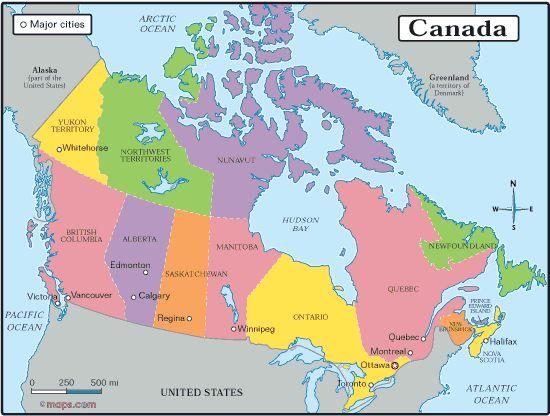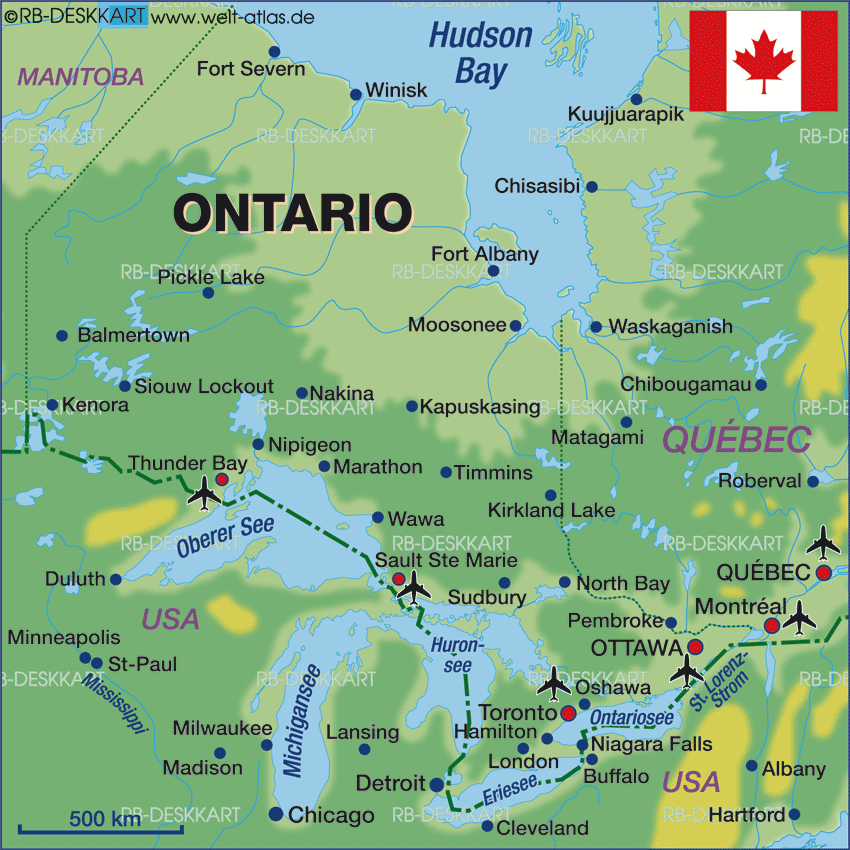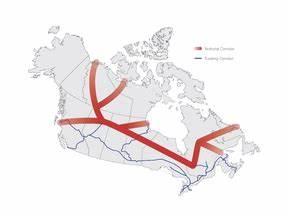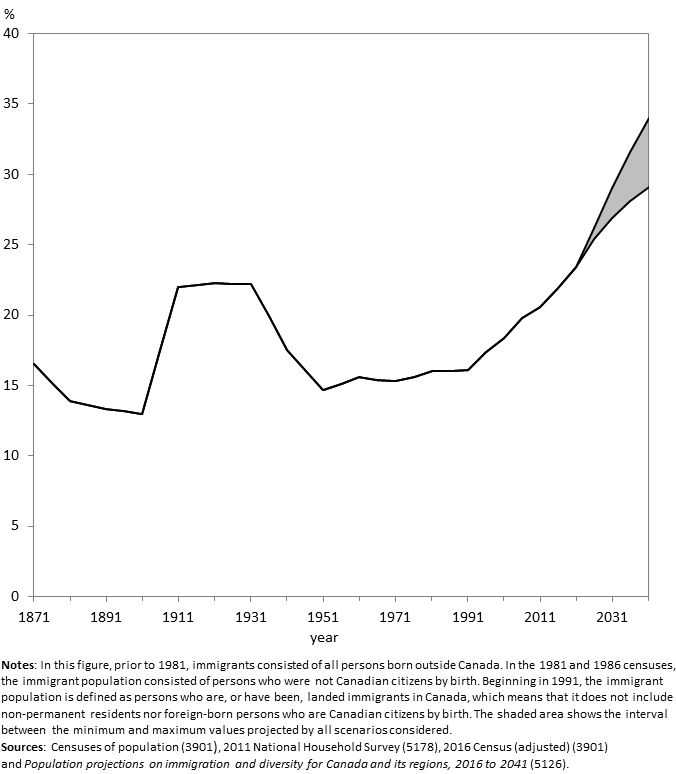Introduction
Ontario is one of Canada’s provinces located in east central Canada and borders the United States. Neighboring provinces include Quebec to the east and Manitoba to the west. Ontario is among the largest Canadian provinces, with a population of 13.45 million, representing 38% of Canada’s population (Muldoon et al., 2019). This research analyses Ontario province with a focus on the region’s main economic activities, Ontario’s natural features, and its economic contributions to the region. Additionally, the report looks into Ontario’s population density and evidence of population change over the years. The report also analyses the presence of Bone’s fault lines and the projection of the fault line in the next ten years. Moreover, the report studies any challenges facing the province’s population in the next ten years, giving reasons and possible solutions. While Ontario is known for its natural features, demographic status, and economic state, an analysis of the region’s present state gives a comprehensive outlook on the region’s current and possible future conditions.

Dominant Economic Activities in Ontario
Ontario is Canada’s industrial prime land, making it its largest economic province. The province contributes 37% of Canada’s gross domestic product (GDP) and has 45% of the country’s industrial activities (Mastroeni, 2022). The Automotive and telecom sectors form the top key contributors to Ontario’s economy, and the sectors receive financial investment from the government (Mastroeni, 2022). Government investments aim to improve innovative knowledge and industrial action in the province. Ontario industries operate under an export oriented economy that requires the production of high-value and high-quality goods. Moreover, the industries support start-ups and other innovations to support Ontario’s technological and economic needs. Therefore, the telecom sector, industries, and entrepreneurial businesses are among the top economic activities in Ontario.
Brief Description and Overview of Natural Features Found in Ontario
Ontario has excellent geographical landscapes and natural features that give the province a natural diversity. Ontario is home to the world’s most famous Niagara Falls, the source of North America’s first significant hydropower electricity. Since the late 19th century, the Niagara Falls hydroelectric power plants have triggered intense economic activities in the area and in Ontario (Mahmood and Bartlett, 2021). The electricity generated from the 180-foot falls cut the high cost of coal and allowed Canada to export power to the United States of America. Niagara Falls became an investment point for Ontario and Canada as America participated in the hydropower generation. Moreover, Ontario Province established the Niagara Parks Commission in 1885 to preserve the natural scenery around Niagara Falls. Despite heavy industrial work in the region, the sustained scenery has made Niagara Falls an international tourist destination (Mahmood and Bartlett, 2021). Therefore, Niagara Falls and its parks have contributed significantly to Ontario’s economy.
Table 1: Niagara Hydroelectric Power Generating Stations
Secondly, Ontario’s vast forest ecosystem extends to the northern parts of the province and the Hudson Bay lowlands. The boreal forests to the north consist of mixed wood, low-lying areas of bogs, and coniferous forests (Fleming et al., 2022). The boreal forests are the key regulators of the carbon cycle and climate change regulation. While Ontario is mindful of the need to prevent further global warming, mature trees from the forests often get harvested. Products from coniferous wood have high market value, boosting Ontario forests’ economic sector (Ma et al., 2022). Ontario forest management aims to increase profits from wood harvests while observing moderate carbon absorption to prevent further global warming. Therefore, Ontario’s vast forest cover has robust economic gains for the province.
Population Density and Change Since 2001
Canada has been a vastly diverse and multicultural country occupied by diverse cultures and groups. According to Statistics Canada, by 2019, the country had almost 37.5 million occupants, with 6% of that being indigenous people (Campbell, 2021). Over a third of Canada’s population lives in the Southern Ontario region, Canada’s most productive agricultural area. The area gets demographically described as a mosaic since people can integrate into Canadian society but retain their histories, ethnicities, and cultures (Campbell, 2021). Ontario’s population has undergone several changes since the early 2000s. The impacts of industrialization in the 20th century directly impacted Ontario and Canada’s population in general, given an increase in life expectancy. Therefore, the population in Ontario is concentrated in the southwest and dispersed in the northern parts of the province.
Ontario province’s growing population makes up most of Canada’s population. According to the Ontario Ministry of Finance, in 2019, Ontario’s population statistics accounted for 38.6% of Canada’s population (Campbell, 2021). According to Ontario Ministry of Education, in 2009, Aboriginal people were the fastest-growing population while most new immigrants settled in Ontario (Campbell, 2021). Statistics Canada indicates that Ontario experienced a population increase of over 106,459 people during the third quarter of 2022 (2022a). In the Ontario region, a considerable part of the population resides in Toronto and other towns in southwestern Ontario, making the city the most populated metropolitan area in Canada (Statistics Canada, 2022a). The Niagara region in southwestern Ontario comprises 12 municipalities or rural and urban communities with a growing population (Palilionis, 2022). The metropolitan area attracts the majority of the population, given its access to innovation and economic resources. Therefore Toronto is the most concentrated area of residence. In contrast, the periphery areas have scattered populations due to smaller size towns, lack of access to economic infrastructure, and further distance from the city.
Periphery Areas in Population Density and Growth
The large metropolitan areas in Ontario often get the most significant focus on the economy and culture of the province, leading to the sidelining of peripheral areas. Periphery areas in population density include smaller cities within the province; for instance, Northern Ontario is situated away from major metropolitan areas. Northern Ontario faces the challenge of limited access to communication infrastructure. With unreliable communication channels, people in Northern Ontario have difficulty innovating and maintaining businesses (Munzur, 2022). Friedman’s core-periphery model explains how some areas enjoy prosperity while others get characterized by poverty and neglect. Specific periphery areas in Northern Ontario include Timmins, Kenora, and Sudbury. Northern Ontario, the resource hinterland, has expertise in tech mining, remote health care, and eco-friendly forestry, contrary to the perception that periphery areas are not talented or innovative. Northern Ontario makes up 90% of the province’s land mass but lacks political autonomy and has become a periphery area due to low population density. Additionally, the region’s lack of a large metropolitan area presents the area as marginalized. Compared to the rest of Ontario, the population in Northern Ontario has been relatively small. Such information may present Northern Ontario as an inauspicious area for innovativeness.

Northern Ontario, a rich source of mining technological innovation and bio-forestry technology, is a creative pioneer. Economically, the peripheral area is rapidly growing as more focus on creativity, economic activities, and projects continue, for instance, the Canadian Northern Corridor project (Munzur, 2022). Geographic isolation in the periphery often challenges the development and expansion of creative enterprises; hence, the Canadian Northern Corridor project passing through the Hudson Bay lowlands would boost the peripheral population’s economy. Some economic challenges residents of Northern Ontario face include limited transportation options, high gas prices, and infrastructural problems, making the region a periphery area (Bone, 2018). However, since the region has a creative advantage, improving highway connectivity and other alternatives may sustain the region and keep its population growing. The periphery areas rich with natural resources ought to remain actively engaged in finding economic solutions to sustain their region.

Bone’s Fault Lines Evident in Ontario and its Outlook in 10 Years
Most societies have political or social cracks that may threaten to divide its people. Bone (2018) identified social or political fault lines as aspects that threaten a society’s integrity. The increased flow of immigrants to Ontario has become a challenge in the region. Projections indicate that more immigrants are likely to settle in Toronto, Ontario, which creates a social fault line currently active as Canada receives Ukrainian nationals and other immigrants from various parts of the world. Each wave of immigration has a different impact on the stability of Ontario. Immigrants have constantly been marginalized due to unjust legislative frameworks in Ontario (Odhiambo et al., 2022). Statistics Canada projects an increase in immigrants to cater to the country’s labor shortage in some industrial sectors (2022c). Therefore, the social fault line will likely remain active if proper legislation is not implemented.

Greatest Challenges Facing People in Ontario in Ten Years
Food insecurity is a possible challenge facing the Ontario population in the next ten years. The demographic, social, and economic changes witnessed in Ontario over the years have created competitive challenges for the province. For a long time, Ontario has operated on an innovation-based industrial policy. Constant changes in the political space, impacts of globalization, and free trade agreements between Canada and the United States of America have seen a tremendous increase in economic value in Ontario (Mastroeni, 2022). The world will stare at a global food shortage in the next few years due to the effects of climate change and altered land use. However, despite rising population growth in areas like Ontario, the country is expected to be among the least affected areas by food insecurity (Molotoks et al., 2021). There is a need to stop land degenerative agricultural practices and adopt sustainable means of farming to ensure food security in the future. Additionally, Ontario needs to reclaim more agricultural land lost to erosion and other destructive agricultural practices.
Secondly, Ontario’s people will likely face a housing crisis in the next ten years. Given the recorded population increase in Ontario, more people are likely to remain vulnerable to a lack of affordable housing in the region. Ontario saw an increase in housing costs by over 7.6% between 2018 and 2021while the average measure of housing affordability declined from 22% in 2018 to 19.5% in 2021 (Statistics Canada, 2022b). Population projections indicate a larger Canadian population due to increased immigration and other demographic developments. Most immigrants who already tend to settle in Toronto are projected to be more concentrated in the city (Statistics Canada, 2022b). The rising cost of living has put many Canadians in a vulnerable position where most low-income families are likely to lose their homes. As campaigns for social and affordable housing continue, the Ontario province, marking population increase, ought to ensure effective plans to provide sufficient and affordable housing to its residents.
Conclusion
A literary analysis of Ontario gives a comprehensive depiction of the Canadian province. Ontario has numerous economic activities, including industries and telecommunication plants. A huge part of Ontario’s population resides in the Southwestern parts of the province, while Northern Ontario forms the population periphery with less population density and limited economic activities. However, Northern Ontario has excellent resources that require the government’s investment to boost innovation. Ontario attracts massive immigrant settlements, making the region vulnerable to a social fault line as the legislature seeks amicable solutions. Moreover, the province has experienced a population increase, putting residents at risk of food insecurity and housing shortage in the next ten years. Therefore, with effective policies, the region can avoid future challenges and remain financially self-sufficient.
References
Bone, R. M. (2018). The original geography of Canada (7th ed.). Don Mills, ON: Oxford University Press. ISBN: 9780199021291.
Campbell, C. (2021). Educational equity in Canada: The case of Ontario’s strategies and actions to advance excellence and equity for students. School leadership and management, 41(4-5), pp 409-428.
Fleming, K. J., Schaefer, J. A., & Beresford, D. V. (2022). New records and range extensions of Carabidae of Ontario’s boreal forest. The Canadian entomologist, 154(44). Cambridge University Press, pp 1-25.
Ma, Z., Chen, S., Shahi, c., Chen, H.Y., & Chen, H. (2022). Trade-offs between economic gains and carbon stocks across a range of management alternatives in Boreal forests. Forests, 13(1777).
Mahmood, A. A., & Bartlett, M. (2021). The Niagara power generating stations: A major milestone in the use of hydro-electrical energy. CSCE 2021 Annual Conference. Inspired by nature.
Mastroeni, M. (2022). Ontario: Heartland Canada. Ideas, institutions, and interests: The drivers of Canadian provincial science, technology, and innovation policy. Cap 10. University of Toronto Press.
Molotoks, A., Smith, P., & Dawson, T. P. (2021). Impacts of land use, population, and climate change on global food security. Food and energy security, 10(261). John Wiley and Sons Limited.
Muldoo, K., Smith, G., Talarico, R., Heimerl, M., McLean, C., Sampsel, K., & Manuel, D. (2019). A 15-year population-based investigation of sexual assault cases across the province of Ontario, Canada, 2002-2016. American Journal of public health, 109(9), pp 1280- 1287.
Munzur, A. (2022). Existing and pending infrastructure projects: Potential compatibility with the Canadian Northern Corridor. Canadian Northern Corridor special series. The school of public policy publications, 15(5). University of Calgary.
Odhiambo, A. J., Forman, L., Nelson, A. E., O’Campo, P., & Grace, D. (2022). Unmasking legislative constraints: An institutional ethnography of linkage and engagement in HIV healthcare for African Caribbean, and Black people in Ontario, Canada. PLOS Global Public Health, 2(9). Robinson, J, (ed).
Ogle, K. (2020). A ‘nothern corridor’ to put Canada back on the map. National post.
Palilionis, K. (2022). Assessment of water resilience principles in water policies and plans: Niagara region. Sustainability, science, and society. Master thesis. Brock University.
Pinterest. (2018). Canada provinces and territories. Canada map. Web.
Statistics Canada. (2022a). Canada’s population estimates- third quarter 2022. The Daily.
Statistics Canada. (2022b). Housing challenges remain for vulnerable populations in 2021.The Daily.
Statistics Canada. (2022c). Canada in 2041: A larger, more diverse population with greater differences between the regions. The Daily.
World Atlas. (n.d.). Map of Ontario (Canada). Map in the Atlas of the world. Web.